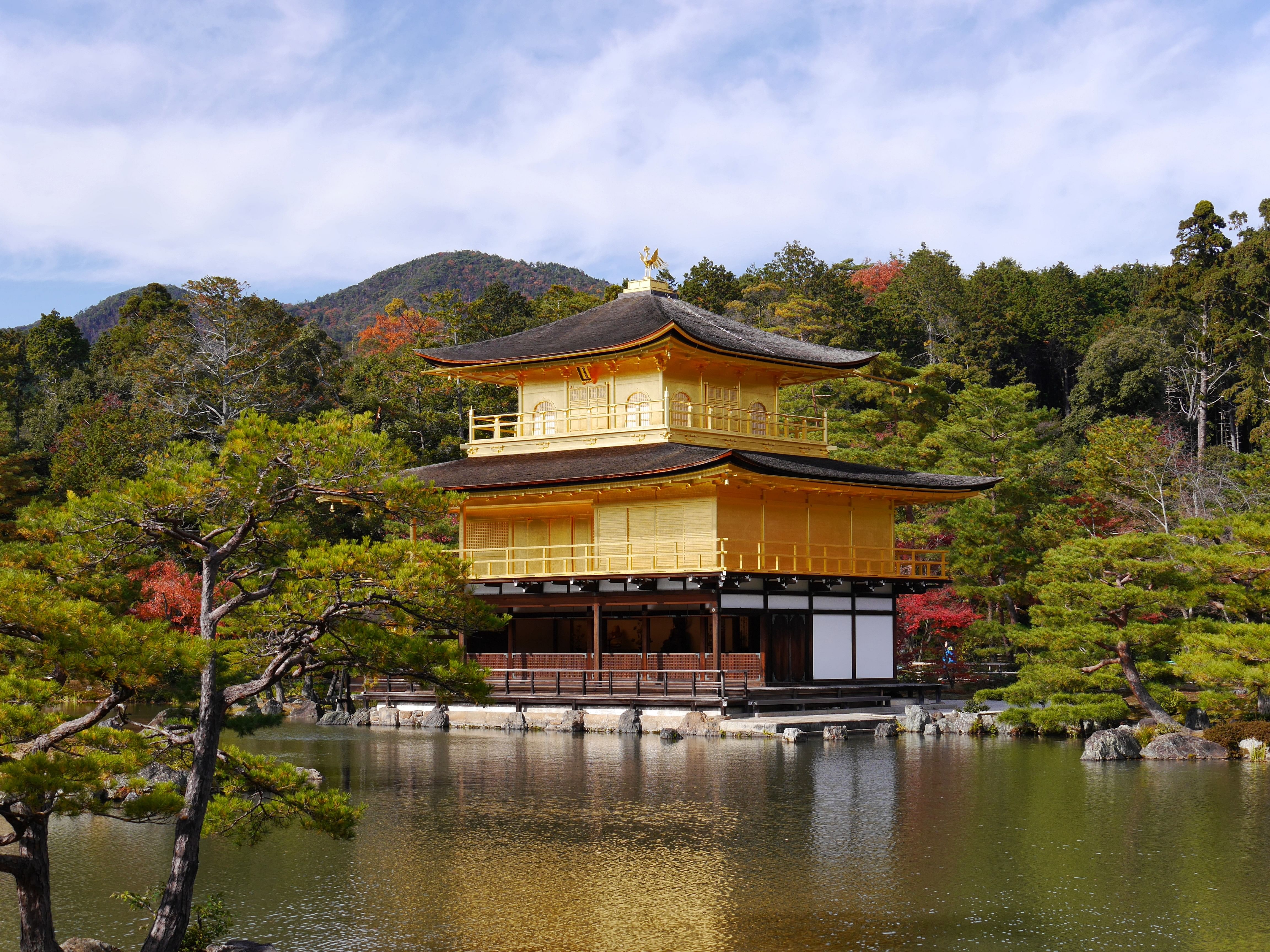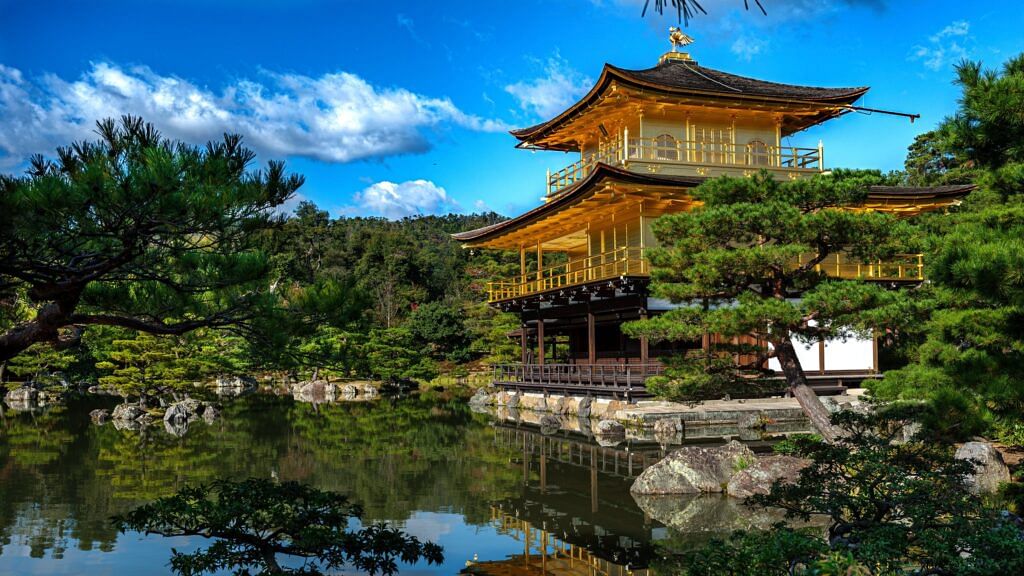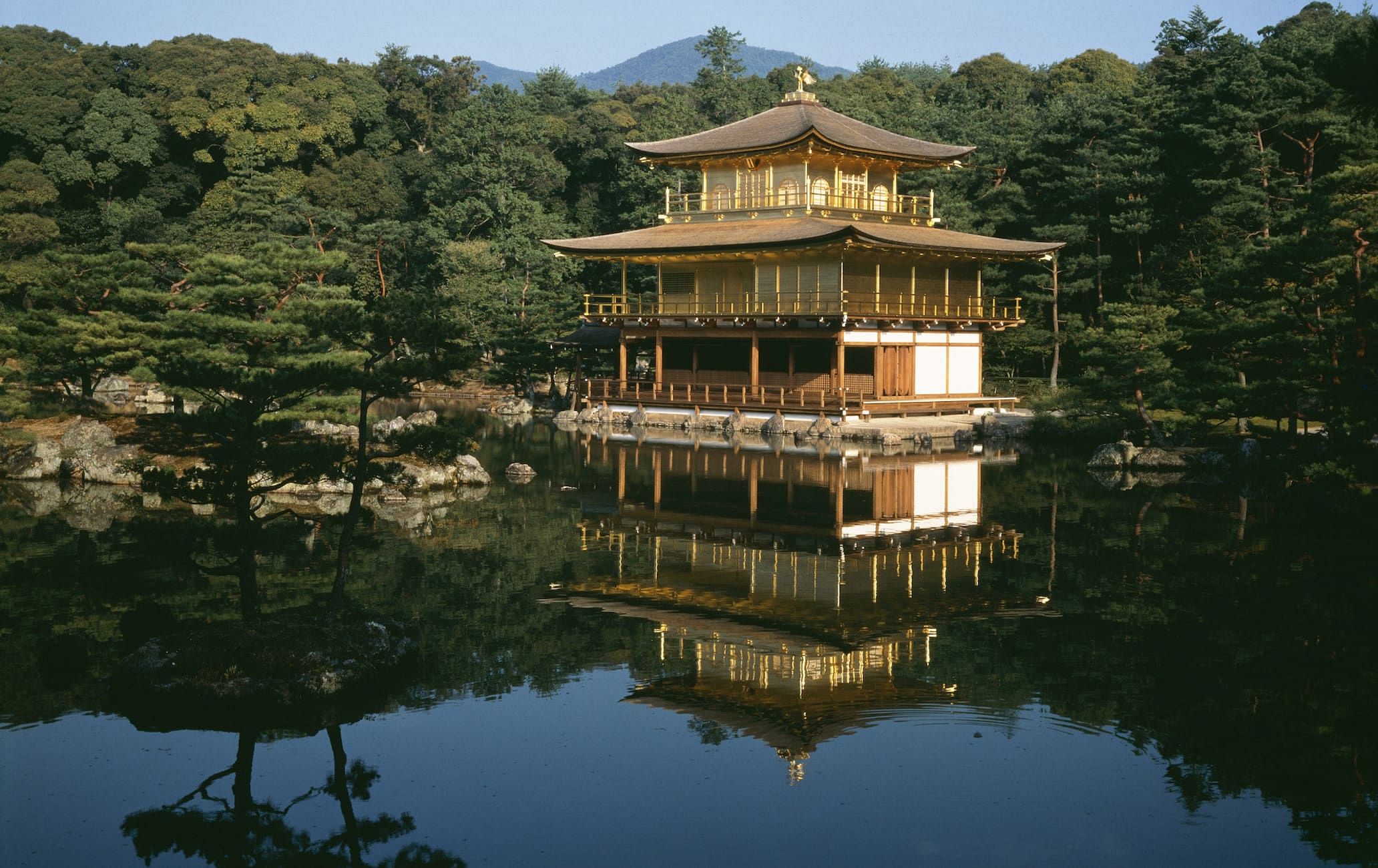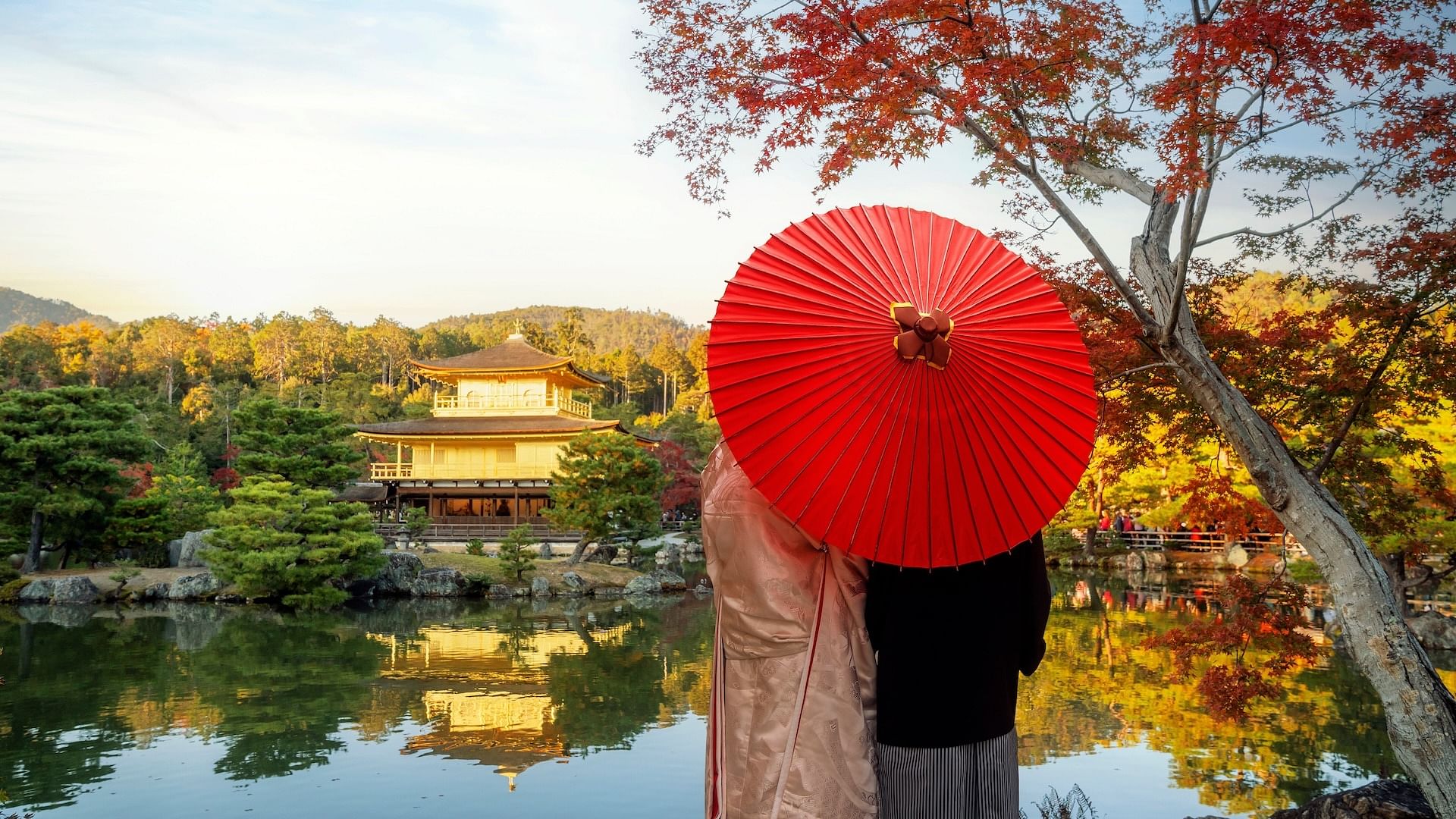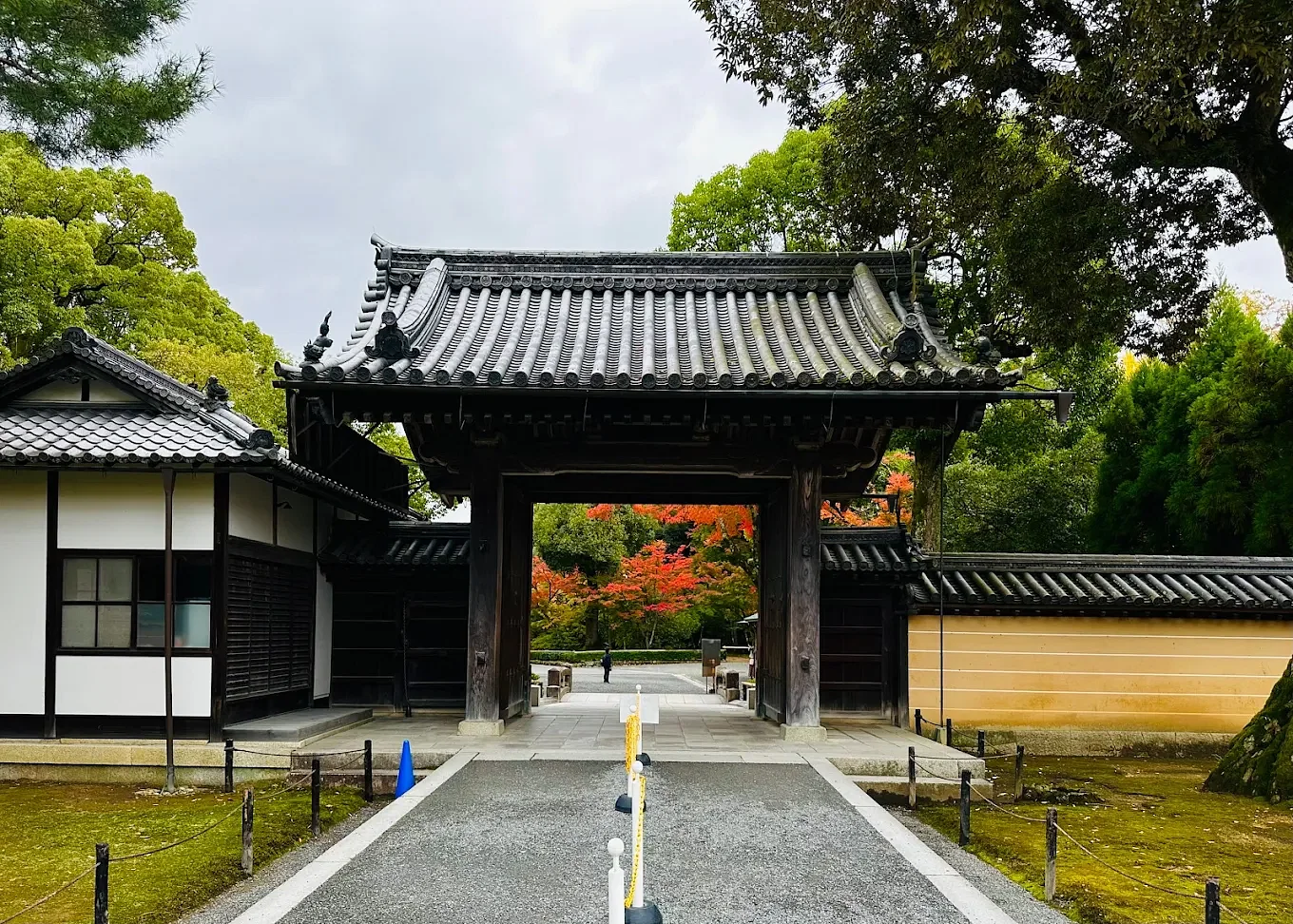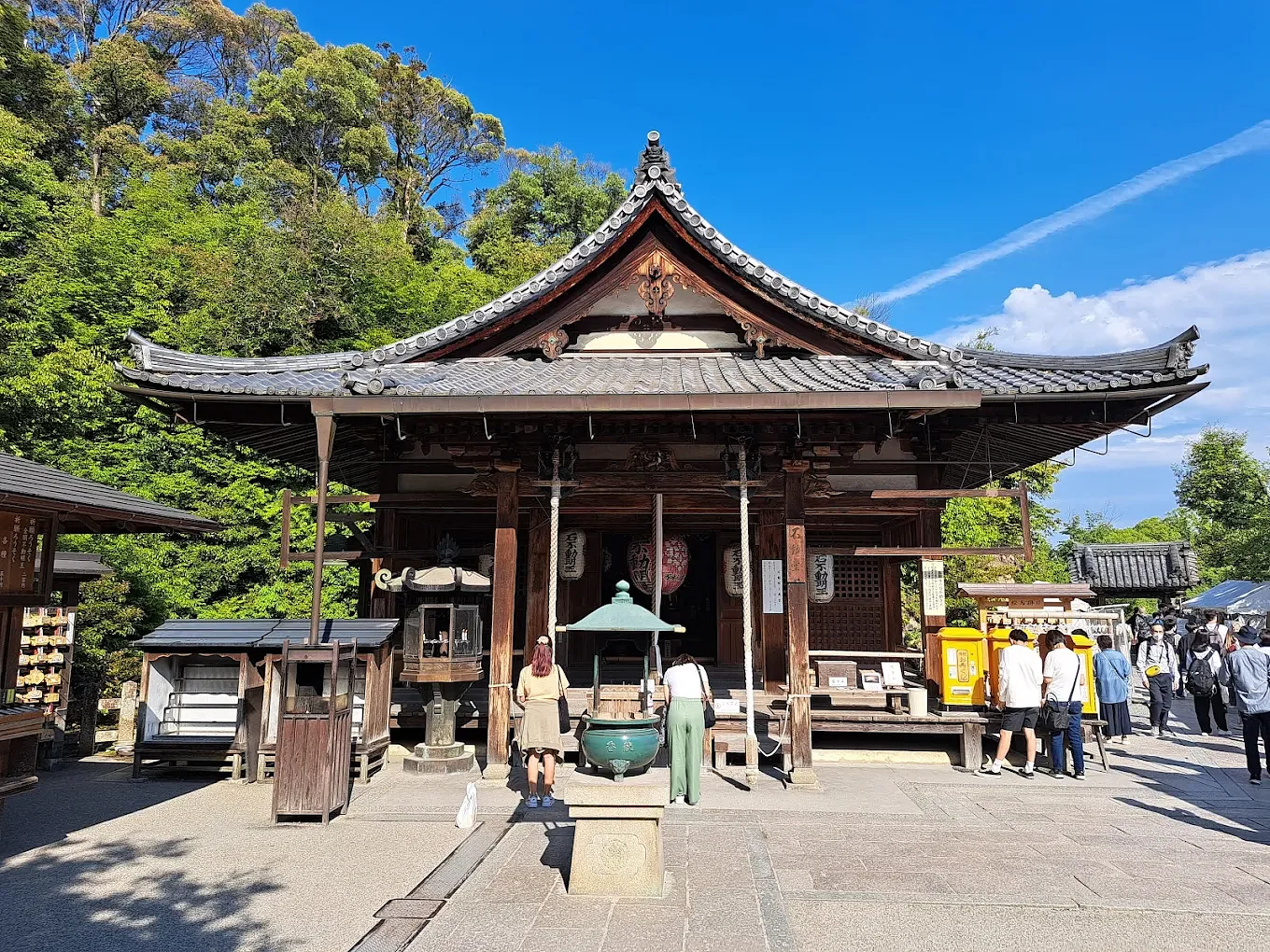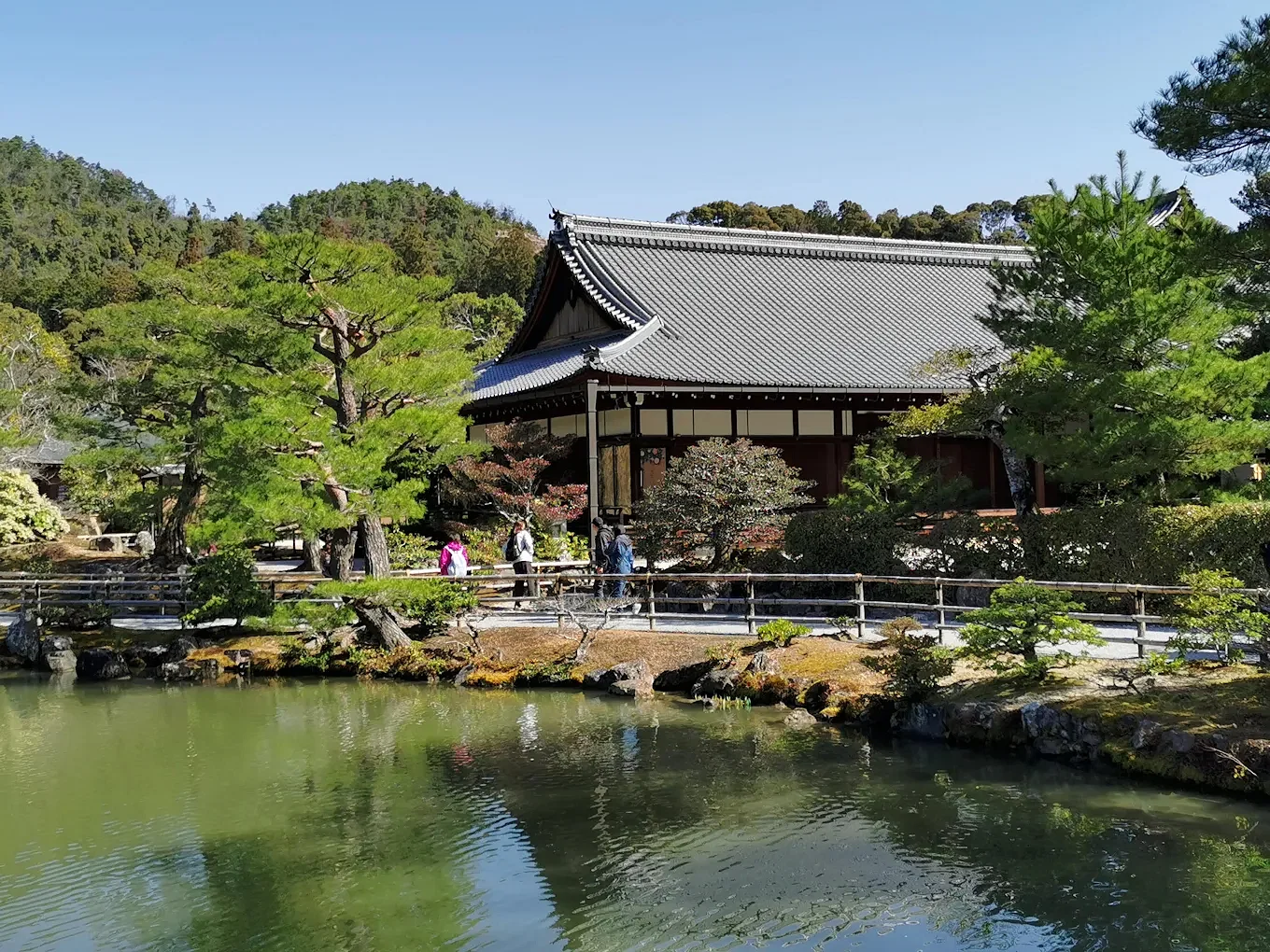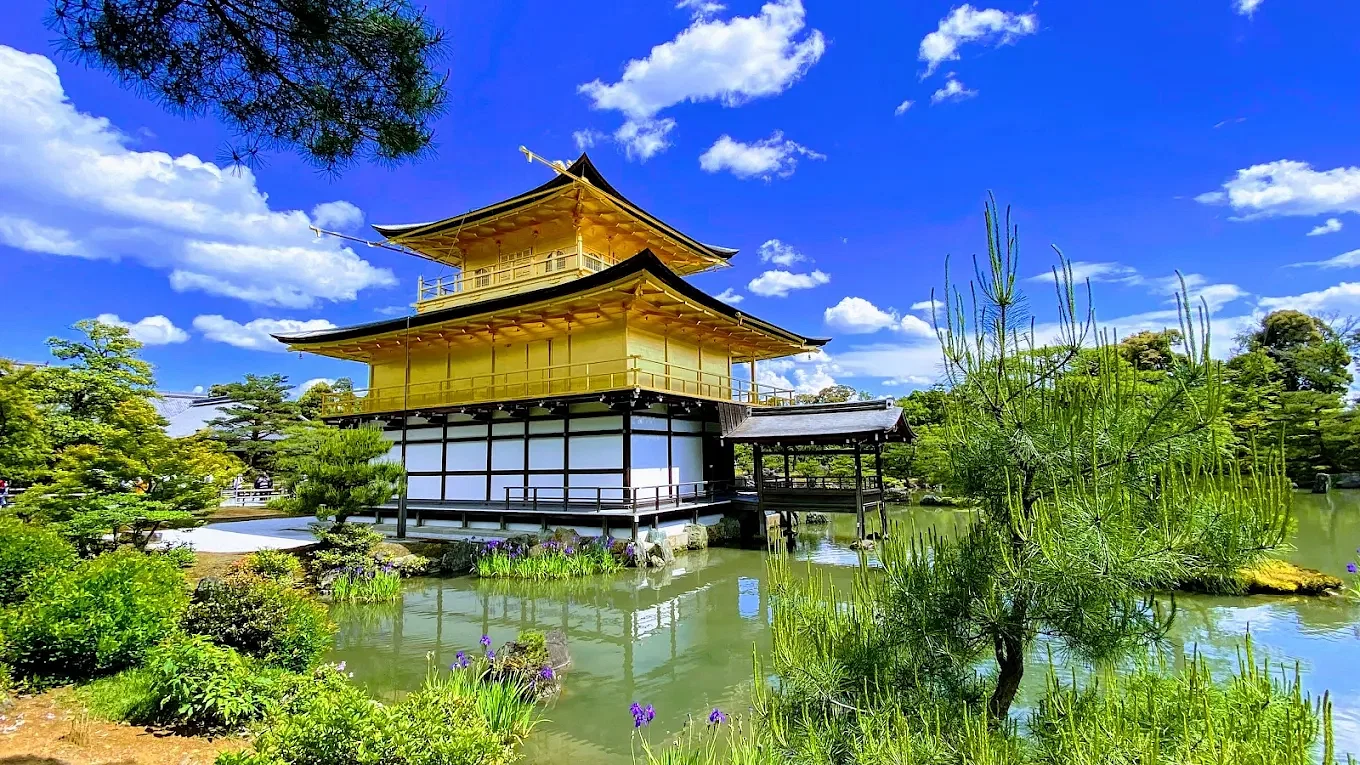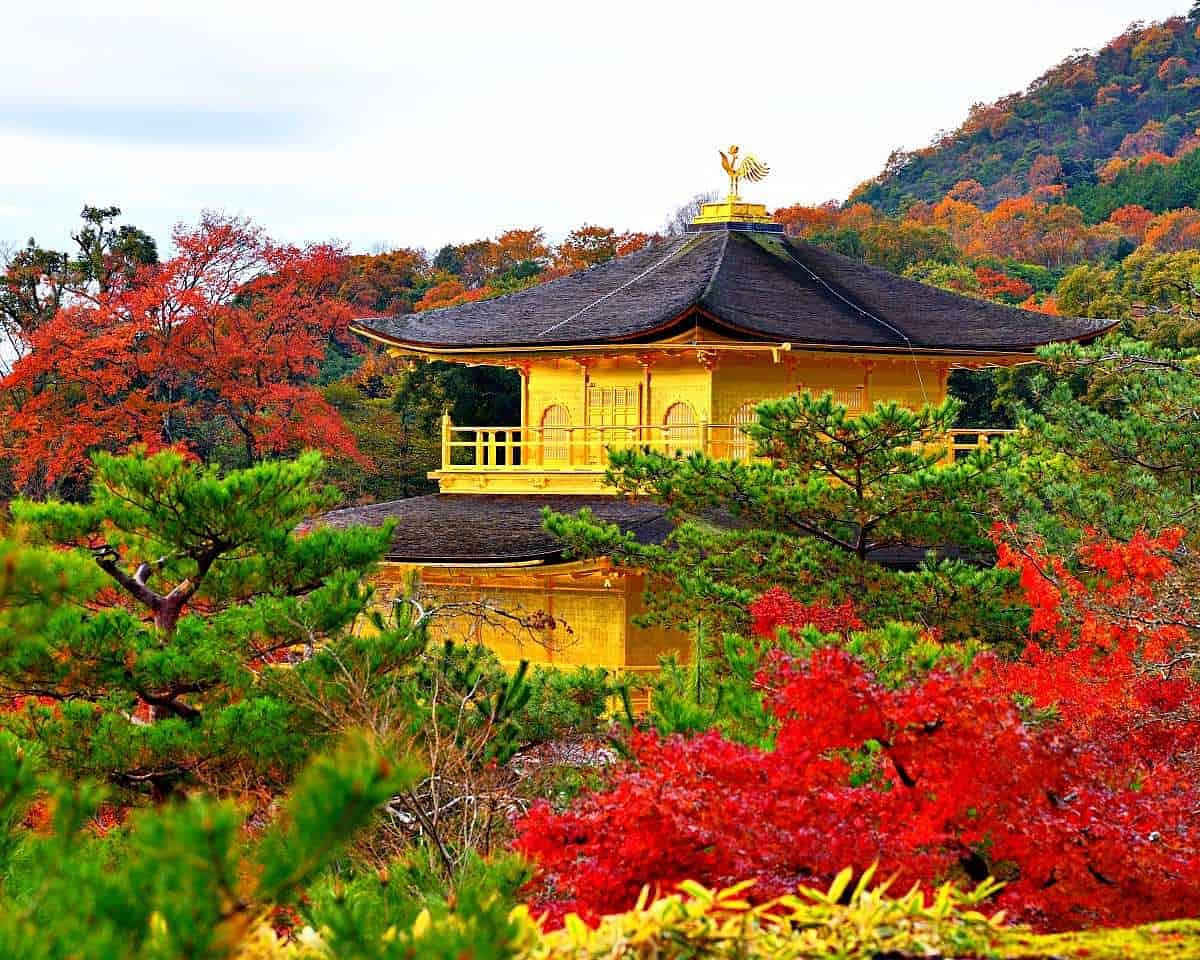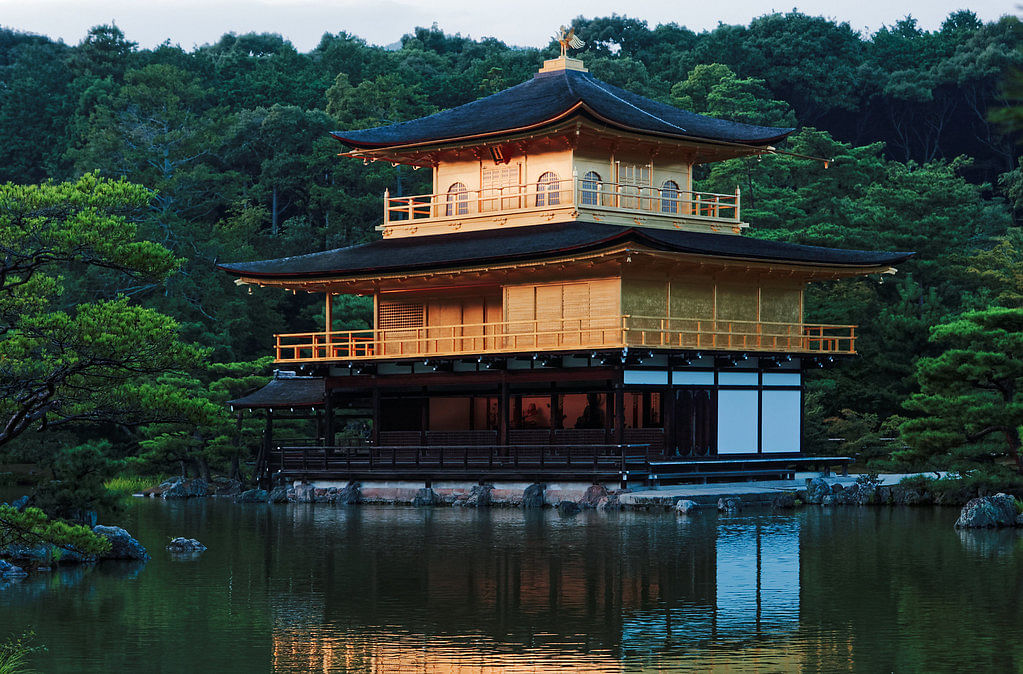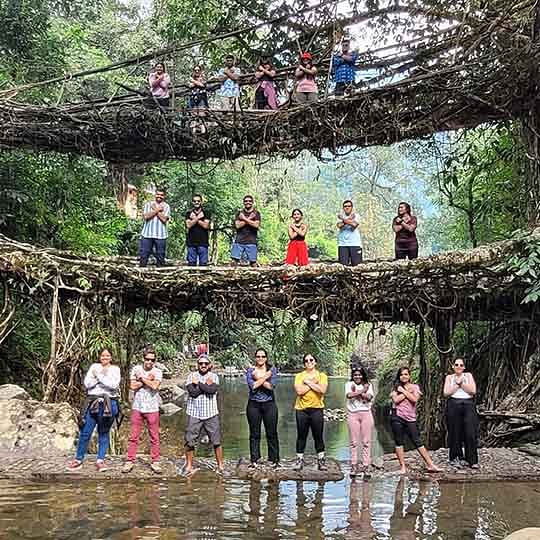Ever wondered what a real-life golden palace looks like? Visit Kinkakuji Temple in Kyoto, where history meets pure magic. This isn’t just another tourist spot – it’s a stunning slice of Japanese culture that’ll make your jaw drop. It is just a small part of the incredible Places to Visit in Japan.Originally built as a retirement villa for shogun Ashikaga Yoshimitsu in the late 14th century, the temple was later converted into a Zen temple after his death. That’s Kinkakuji Temple for you! If you’re planning our Japan Tour Packages, trust us, you can’t miss this. It’s one of those things to do in Japan that’ll have your Instagram followers going crazy with envy.
The building is covered in gold leaf – we’re talking top-to-bottom bling. Each level looks different, and the whole scene is so perfect it almost doesn’t seem real. When you walk through the gardens, you’ll feel like you’ve stepped into a living postcard. Kyoto’s got a lot of amazing spots, but Kinkakuji Temple? It’s on another level entirely.
In this blog, We’ll share everything you need to know about the
Kinkakuji Temple, including its story, location, entrance fees, opening hours, and what makes it so unique. If you’re planning a trip to Kyoto, this is one spot you don’t want to miss.
The Story of Kinkakuji Temple
The Kinkakuji Temple’s history is as interesting as the temple is beautiful. The temple we see today was originally built in 1397, during Japan’s Muromachi period. It was commissioned by Ashikaga Yoshimitsu, the third shogun of the Ashikaga shogunate, as his retirement villa. The beauty of Zen Buddhism so inspired Yoshimitsu that he decided to convert the villa into a Zen temple after his death. But the temple has not had an easy past. In 1950, it was tragically burned down by a young monk in a shocking incident that left the country stunned. Fortunately, the Kinkakuji Temple was reconstructed in 1955, replicating its original form and restoring its grandeur. The story of destruction and rebuilding is an important part of the Kinkakuji Temple’s history, highlighting the deep respect the Japanese people have for their cultural landmarks.
Today, the temple is a symbol of Kyoto and a reminder of Japan’s rich heritage. It stands proudly as a UNESCO World Heritage Site, drawing travelers and pilgrims from around the world.
Suggested Read: Shinjuku Gyoen National Garden
Kinkakuji Temple Location
The Kinkakuji Temple location is in Kyoto’s northern Kita Ward. Surrounded by peaceful hills, it feels like you’re stepping into a different world far away from the busy city. Despite its peaceful surroundings, the Kinkakuji Temple location is easy to access. From Kyoto Station, you can take a direct bus or taxi, which takes about 30-40 minutes depending on traffic. Once you arrive, you’ll find the temple grounds neatly organized, with a ticket counter at the entrance. There are also plenty of signboards in Japanese and English, making it easy for visitors to navigate. If you’re looking for a quiet escape in Kyoto, the Kinkakuji Temple location is perfect.
Kinkakuji Temple Opening Hours
The Kinkakuji Temple’s opening hours are from 9:00 AM to 5:00 PM every day, and the temple doesn’t have a closing day. This is great for travelers who want to visit at their own pace. To make the most of your experience, We’d recommend arriving right when the temple opens. Early mornings are less crowded, and the soft sunlight creates a magical reflection on the golden structure. On weekends and during cherry blossom or autumn foliage seasons, the temple can get quite busy. If you’re visiting during these times, it’s a good idea to come early or later in the afternoon to enjoy some peace.
Suggested Read: Rainbow Bridge Tokyo
Kinkakuji Temple Entrance Fee
To enter the temple grounds, visitors are required to pay a Kinkakuji Temple entrance fee. The cost is as follows:- Adults: 220 INR approximately
- Children (elementary and junior high school): 165 INR approximately
The Kinkakuji Temple entrance fee is incredibly reasonable given the extraordinary experience it offers. Once you purchase your ticket, you receive a beautifully printed slip of paper featuring Japanese calligraphy. This ticket makes for a simple yet special keepsake of your visit.
If you plan to visit during peak seasons, such as cherry blossom in spring or the colorful foliage of autumn, be prepared for large crowds. Arriving early in the day, as soon as the Kinkakuji Temple opening hours begin, will give you the best chance of enjoying the temple in peace.
The Magnificent Golden Pavilion Kyoto
The highlight of the Kinkakuji Temple is the main structure known as the Golden Pavilion Kyoto. It gets this name because the top two floors are covered in pure gold leaf, which shines brilliantly in the sunlight. This golden glow makes it one of Kyoto’s most photographed landmarks. The Golden Pavilion Kyoto is built on the edge of a pond called the Mirror Pond. On a clear day, the reflection of the golden building in the water is beautiful, almost as if two temples are staring back at you. Visitors often pause here for long moments, simply soaking in the beauty of the scene.
Suggested Read: Tokyo Skytree
Kinkakuji Temple Architecture
The Kinkakuji Temple architecture is a marvel of Japanese craftsmanship. The temple consists of three distinct floors, each built in a different architectural style, reflecting the diverse cultural influences of the time.1. The First Floor (Shinden Style): The first floor of Kinkakuji Temple was built in the Shinden style, which was common in aristocratic palaces during the Heian period. This floor features natural wood pillars and white plaster walls, creating an elegant yet understated look.
2. The Second Floor (Samurai Style): The second floor is designed in the Buke-zukuri style, which was used in samurai houses. This floor is partially covered in gold leaf, and its windows have intricate wooden lattices.
3. The Third Floor (Zen Style): The third floor reflects Chinese Zen architecture, with gold leaf covering the entire structure. At the top of the pavilion sits a golden phoenix, symbolizing rebirth, hope, and beauty.
The blend of these three styles makes the Kinkakuji Temple architecture a unique masterpiece. Each floor complements the others, creating a harmonious and balanced structure that reflects the essence of Zen philosophy.
Suggested Read: Hotels in Tokyo
Capturing the Perfect Kinkakuji Temple Photos
For photographers, both amateur and professional, Kinkakuji Temple photos are some of the most rewarding shots to capture in Kyoto. The golden reflection of the temple in the Mirror Pond is undoubtedly the most iconic shot, but there are other angles worth exploring.To capture the perfect Kinkakuji Temple photos, consider visiting during these times:
- Early Morning: The soft light of early morning creates a calm and ethereal glow on the golden structure. Plus, you will avoid the crowds.
- Late Afternoon: The warm light of the late afternoon sun brings out the rich gold tones of the pavilion.
- Winter: If you’re lucky enough to visit after snowfall, the temple covered in white snow creates an enchanting scene.
The beauty of Kinkakuji Temple is that it looks spectacular in all seasons, whether it’s surrounded by cherry blossoms, autumn foliage, or fresh summer greenery. Each season offers a unique opportunity for capturing unforgettable Kinkakuji Temple photos.
Suggested Read: Senso-ji Temple
What to Expect During Your Visit
Visiting Kinkakuji Temple in Kyoto is more than just seeing a temple—it’s about experiencing peace and nature. Walking through the beautifully landscaped gardens, you’ll find yourself slowing down and appreciating the details. The main path takes you to the Golden Pavilion Kyoto, where most visitors pause to admire the reflection in the pond. From there, the path winds through the gardens, passing smaller shrines, stone lanterns, and waterfalls.
There’s also a small tea house where you can sit and enjoy matcha tea with traditional Japanese sweets. It’s a quiet spot to take a break and immerse yourself in the surroundings.
Suggested Read: Tsukiji Outer Market
Why Visit Kinkakuji Temple?
There are many reasons why the Kinkakuji Temple is one of the most popular spots in Kyoto: 1. Stunning Beauty: The Golden Pavilion Kyoto is a one-of-a-kind sight that you’ll never forget.
2. Rich History: The Kinkakuji Temple history connects you to centuries of culture and tradition.
3. Peaceful Atmosphere: The temple grounds offer a break from the hustle and bustle of city life.
4. Easy to Access: The Kinkakuji Temple location makes it a convenient stop on your Kyoto itinerary.
5. Affordable: With a modest Kinkakuji Temple entrance fee, it’s accessible to everyone.
Tips for Visiting Kinkakuji Temple
- Arrive Early: To avoid the crowds, visit during the first hour of the day.
- Check the Weather: The golden structure looks stunning on sunny days, but misty mornings can add a unique atmosphere.
- Take Your Time: Don’t rush through the temple grounds. Spend time enjoying the scenery and taking photos.
- Dress Comfortably: The paths are easy to walk, but comfortable shoes are a good idea.
- Respect the Rules: As with any sacred place, be respectful and avoid loud behavior.
Suggested Read: Mount Fuji, Japan
The Kinkakuji Temple is truly one of Japan’s most extraordinary landmarks. Its golden glow, peaceful gardens, and rich history make it a place that captures your heart and leaves you inspired. Whether you’re admiring the Kinkakuji Temple architecture, learning about the Kinkakuji Temple history, or snapping beautiful Kinkakuji Temple photos, the experience is unforgettable. From its convenient Kinkakuji Temple location to its affordable Kinkakuji Temple entrance fee and flexible Kinkakuji Temple opening hours, visiting the Golden Pavilion in Kyoto is something everyone should do. If you ever find yourself in Kyoto, make sure to see this timeless gem—it’s a moment you’ll treasure forever.





